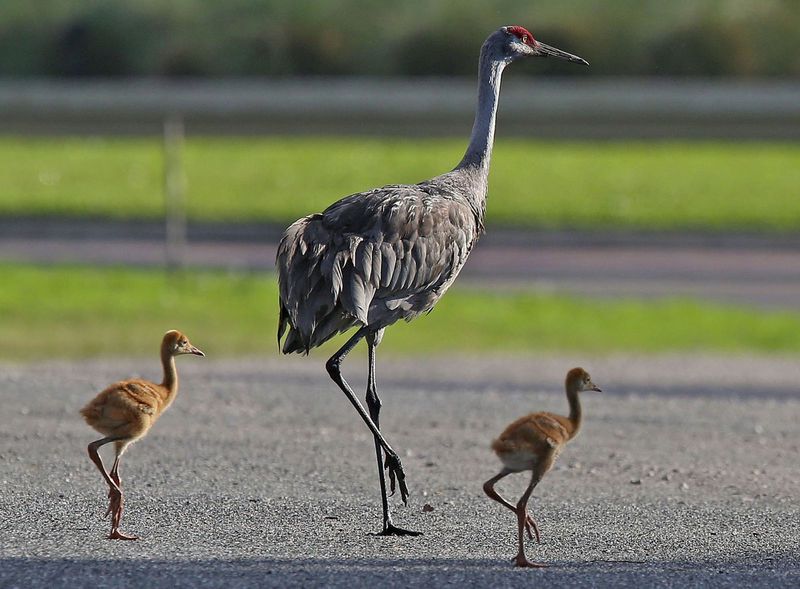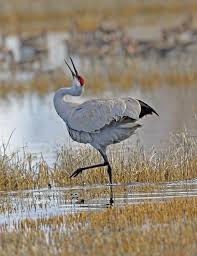DJ Featherton
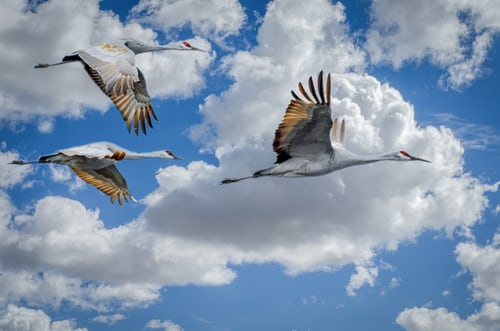
No matter if it’s thousands of migrating Sandhill Cranes covering the sky in “V” shaped formations, or the stately presence of these large birds casually foraging along fields and wetlands, they are a spectacle to see. Every year, birders and photographers from everywhere gather along an 80 mile stretch of the Platte River in Central Nebraska to watch hundreds of thousands of Sandhills make their springtime resting stop before continuing their journey north. 75% of their total population converge on this stretch of river during spring migration. For many people, seeing this phenomenon is an experience of a lifetime.

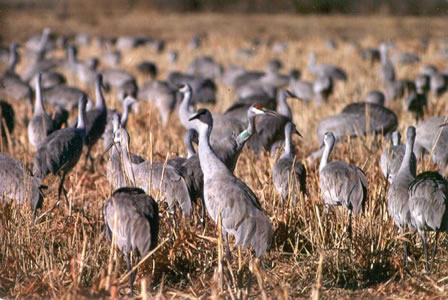



There are more Sandhill Cranes than any others, lives to 40 years, and is one of the most successful and adaptable birds in the world. These majestic birds are not rare or endangered. In fact, the North American Waterbird Conservation Plan lists them as “low concern.” Their numbers have actually increased 4.5% each year since 1966! How often do you see that? Although many people say they’re unaware of this bird, they are common in most areas. Further, standing up to four feet in height, and with a wingspan of 6 – 7 feet, they can be hard to miss. These cranes are not exceptionally wary of people and are common in pastures and fields around town, and even on the golf course. Sandhills roost on the ground. One day on the news they filmed an angry Sandhill that wouldn’t let any golfers get near his roosting spot right on the golf course. That was a spectacle! My parents lived in a townhouse on a Florida golf course and a group of Sandhills were often in their yard. Can you believe fossils of these cranes found in Florida date back 2.5 million years? Yep, they’re easy to see, and apparently have been for a long time.
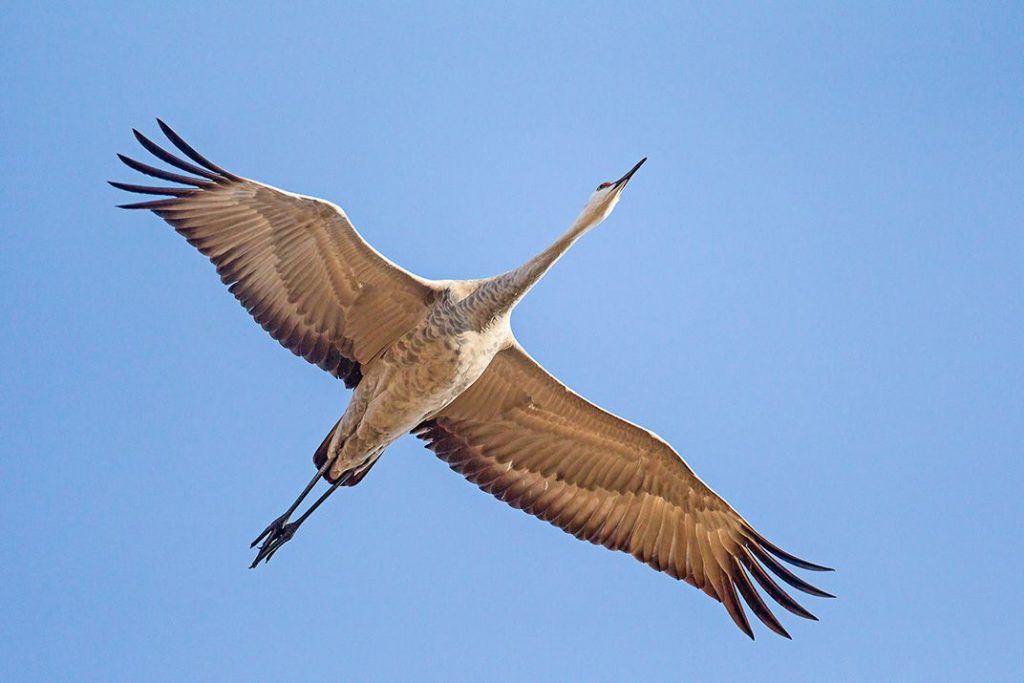
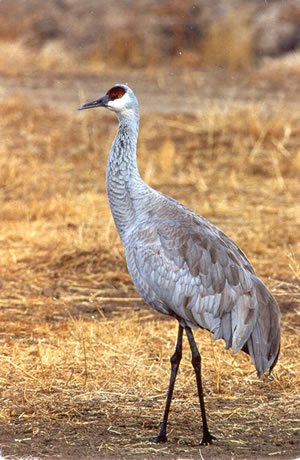

The Sandhill Crane has a breeding range from Alaska through most of Canada, and from New England through the Great Lakes region, and west to Washington state. They winter from Texas to Florida, Cuba and into Mexico. Migration from the north takes them through most states going south. Unlike other migrating birds from the north that fly huge distances at migration, Sandhills only do about 200-300 miles per day, unless they find a strong tailwind which can almost double their miles, so seeing them in fields and wetlands on their way south is not unusual. Their diet covers a wide menu of seeds and grains, fleshy tuber plants, grubs, earth worms, snails, amphibians, small reptiles, small rodents, and even a vulnerable nesting bird in the bush. With a diet like this, any field to land in for the night works well!

Sandhill Cranes come in large, medium and small, but otherwise all share the same plumage and look alike. The “lesser” Sandhills breed in the Arctic and are the smallest. The “greater” Sandhills breed in the northern U.S. and are the biggest, while the nonmigratory “Florida” Sandhill and those that breed in central Canada are midsized. All these cranes have a large and bulky body, a short and full-sized tail that some call a “bustle,” long black legs, and a long slender neck. Their head is small with white cheeks, a bright red cap that is actually skin, and they have a long, straight, black bill. Their overall color is a slate gray with some tan over the back. Attention is drawn to these graceful cranes as they perform their balletic dance with their lifetime mate. During the day, cranes “dance” to relieve stress from migration and strengthen pair bonds. Their dance also establishes social relationships and announces territorial claims. Head bobbing, hopping and jumping, and graceful wing flaps make birders pause to enjoy.


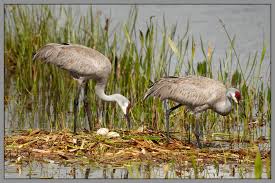
My experience in seeing these great birds always comes as a surprise when there is suddenly a group at the roadside or off in a grassy field. Keep your eyes open for these majestic birds. There are lots of them to be seen, and they make a nice surprise right from your car window!
Happy birding!
